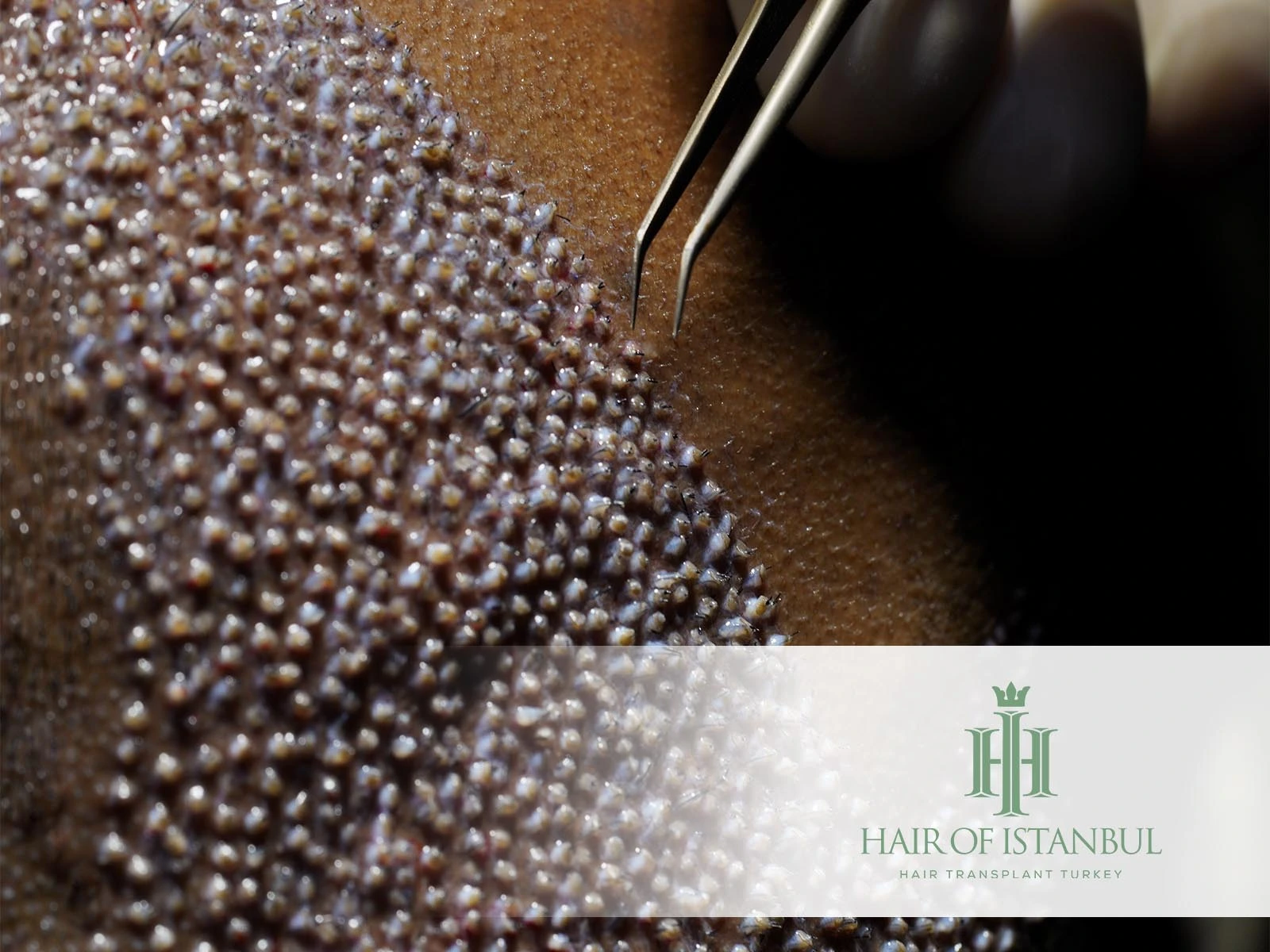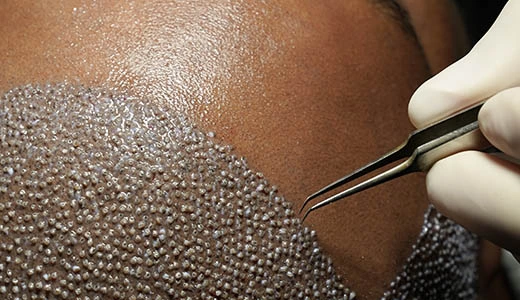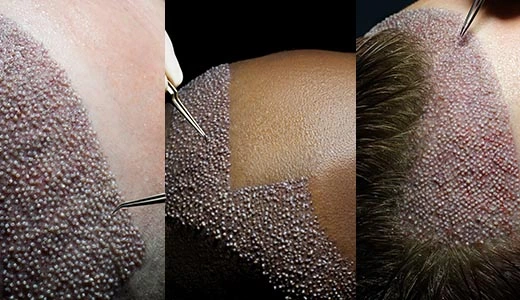
Hair Transplant Holes: Causes, Healing & Prevention Tips
After undergoing a hair transplant, some patients may notice small gaps or hair transplant holes in the scalp, which can cause concern. Understanding what hair transplant holes are, why they appear, and how to properly care for your scalp afterward is essential for managing expectations and ensuring the best results.
At Hair of Istanbul, patient education about issues like hair transplant holes is a priority, guiding you through a smooth recovery and optimal hair growth.
What Are Hair Transplant Holes?
Hair transplant holes refer to tiny punctures or gaps visible on the scalp immediately following the procedure. These small holes result from the extraction of hair follicles in Follicular Unit Extraction (FUE hair transplant) or from the implantation process.
While they may look alarming at first, these holes are a normal part of the healing process and usually close up within days to weeks.

Causes of Hair Transplant Holes
There are several reasons why patients may experience visible hair transplant holes:
-
Extraction sites: Tiny round holes left by follicle removal in FUE.
-
Implantation sites: Micro incisions made in the recipient area to place grafts.
-
Scalp sensitivity: Some scalps may show more noticeable puncture marks.
-
Technique and surgeon skill: Proper handling reduces hole size and trauma.
At professional hair transplant clinics, experienced surgeons minimize visible holes through refined techniques.
How Long Do Hair Transplant Holes Last?
Typically, hair transplant holes start closing within the first week post-procedure. The scalp’s natural healing process gradually fills these small punctures with new skin cells.
-
1-2 days: Initial redness and swelling around holes.
-
3-7 days: Scabs form around holes and begin to fall off.
-
7-14 days: Holes usually close and become less visible.
Proper hair transplant care after helps accelerate this healing and reduce the risk of infection or scarring.
Managing Hair Transplant Holes During Recovery
Patients often wonder how to care for their hair transplant holes safely. Important tips include:
-
Avoid scratching or picking at holes or scabs.
-
Use gentle saline sprays recommended by your surgeon.
-
Follow the washing protocols carefully to avoid disturbing grafts.
-
Sleep with your head elevated to reduce swelling.
These steps support healing and minimize long-term visibility of hair transplant holes.
Can Hair Transplant Holes Cause Scarring?
When managed properly, hair transplant holes do not cause permanent scarring. The size of the holes in FUE is minimal, and the scalp regenerates well.
In rare cases, improper aftercare or aggressive handling can lead to scarring or folliculitis, emphasizing the need for expert care at clinics like Hair of Istanbul.
Hair Transplant Holes and Different Hair Types
Certain hair types, such as curly or afro-textured hair, may display hair transplant holes differently. Specialists performing afro hair transplant understand these nuances and adapt their techniques to reduce hole visibility and enhance healing.

Can Hair Transplant Holes Affect Hair Growth?
Hair transplant holes themselves do not negatively affect hair growth. The follicles are placed into these micro-incisions or extracted from small punctures, but once healed, the new hair grows naturally.
The key is protecting these areas during the healing phase with proper care and following surgeon instructions.
Preventing Hair Transplant Holes from Being Noticeable
While some degree of hair transplant holes is inevitable, there are ways to minimize their visibility:
-
Choosing clinics that use the latest DHI hair transplant techniques, which cause fewer and smaller holes.
-
Ensuring the surgeon uses micro-punches with the smallest possible diameter.
-
Following a comprehensive hair transplant care after program.
Hair Transplant Holes: What to Expect at Hair of Istanbul
At Hair of Istanbul, patients are thoroughly informed about hair transplant holes and the healing process. The expert team uses refined techniques to minimize trauma and guides every patient through an individualized aftercare plan.
Bu gönderiyi Instagram’da gör
This approach ensures rapid healing and excellent cosmetic results.
When to Contact Your Doctor About Hair Transplant Holes
If your hair transplant holes:
-
Remain open or inflamed beyond two weeks
-
Show signs of infection such as pus, severe redness, or pain
-
Cause excessive scarring or bald spots
You should immediately consult your hair transplant clinic.
Hair Transplant Holes Are Normal and Temporary
Experiencing hair transplant holes is a normal part of the modern hair restoration process. With proper surgical technique and aftercare, these tiny punctures heal quickly, allowing your new hair to grow naturally.
Trust reputable clinics like Hair of Istanbul to guide you safely through every stage of your hair transplant journey.
 en
en TR
TR  SK
SK  ITA
ITA  FR
FR  DE
DE  ES
ES  BG
BG